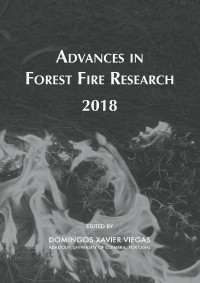Please use this identifier to cite or link to this item:
https://hdl.handle.net/10316.2/44561| DC Field | Value | Language |
|---|---|---|
| dc.contributor.author | Beutling, Alexandre | |
| dc.contributor.author | Batista, Antonio Carlos | |
| dc.contributor.author | Soares, Ronaldo Viana | |
| dc.contributor.author | Stolle, Lorena | |
| dc.contributor.author | Beutling, Felipe | |
| dc.date.accessioned | 2018-11-09T13:01:33Z | |
| dc.date.accessioned | 2020-09-06T17:31:24Z | - |
| dc.date.available | 2018-11-09T13:01:33Z | |
| dc.date.available | 2020-09-06T17:31:24Z | - |
| dc.date.issued | 2018 | - |
| dc.identifier.isbn | 978-989-26-16-506 (PDF) | |
| dc.identifier.uri | https://hdl.handle.net/10316.2/44561 | - |
| dc.description.abstract | In Brazil, fire retardants for forest fire prevention and suppression are seldom used. However, these products can be found in the market, and there are some records of their use. There are also many researches dealing with efficiency evaluations of retardants, using different methodologies. Thus, this research aims to present a standard protocol which can be used by different researchers and orient the professionals who use this type of product in their daily activities. This protocol derives from an improvement of a methodology for evaluating the efficiency of retardants, based on fire behavior analysis in tests carried out in the laboratory. The Effective Efficiency Index (IEE) can be used in different assessment scenarios. With the aid of a pre-configured data processing worksheet, the IEE will facilitate the evaluation of fire retardants in laboratory, as well as to provide a way to compare different formulations and concentrations of many products available in the market. In addition, to refine the results and establish the level of approval, "classification criteria" were created, which provides a distinguished interpretation and allows the comparison of different retardants and concentrations, regardless of their "retardant" or “suppressor " effects (i.e. a retardant that provides only "retardant" effect in the laboratory does not necessarily means that it will be less effective than a product that provides a "fire suppressor" result). To develop the methodology, more than 1000 replicates were conducted in laboratory, using different fire retardants formulations, between 2006 and 2010. In 2018, for the improvement of the methodology (called IEE) and its validation, 250 replicates were conducted with different retardants, concentrations and densities, plus control (plain water). Results showed that the values of the efficiency indices resulting from the tests allows a good estimation of the action (or response) of the fire retardants in field conditions for forest fires control activities. | eng |
| dc.language.iso | eng | - |
| dc.publisher | Imprensa da Universidade de Coimbra | por |
| dc.relation.ispartof | http://hdl.handle.net/10316.2/44517 | por |
| dc.rights | open access | - |
| dc.subject | Fire retardant | eng |
| dc.subject | forest fire | eng |
| dc.subject | fire control | eng |
| dc.subject | forest protection | eng |
| dc.title | Effective efficiency index (IEE): methodology for analyzing the efficiency of fire retardants in laboratory | por |
| dc.type | bookPart | por |
| uc.publication.firstPage | 410 | - |
| uc.publication.lastPage | 417 | - |
| uc.publication.location | Coimbra | por |
| dc.identifier.doi | 10.14195/978-989-26-16-506_44 | - |
| uc.publication.section | Chapter 3 - Fire Management | por |
| uc.publication.digCollection | PB | por |
| uc.publication.orderno | 44 | - |
| uc.publication.area | Ciências da Engenharia e Tecnologias | por |
| uc.publication.bookTitle | Advances in forest fire research 2018 | - |
| uc.publication.manifest | https://dl.uc.pt/json/iiif/10316.2/44561/204119/manifest?manifest=/json/iiif/10316.2/44561/204119/manifest | - |
| uc.publication.thumbnail | https://dl.uc.pt/retrieve/11058029 | - |
| uc.publication.parentItemId | 55072 | - |
| uc.itemId | 68824 | - |
| item.grantfulltext | open | - |
| item.fulltext | With Fulltext | - |
| Appears in Collections: | Advances in forest fire research 2018 | |
Files in This Item:
| File | Description | Size | Format | |
|---|---|---|---|---|
| effective_efficiency_index.pdf | 859.92 kB | Adobe PDF |  |
Items in DSpace are protected by copyright, with all rights reserved, unless otherwise indicated.
